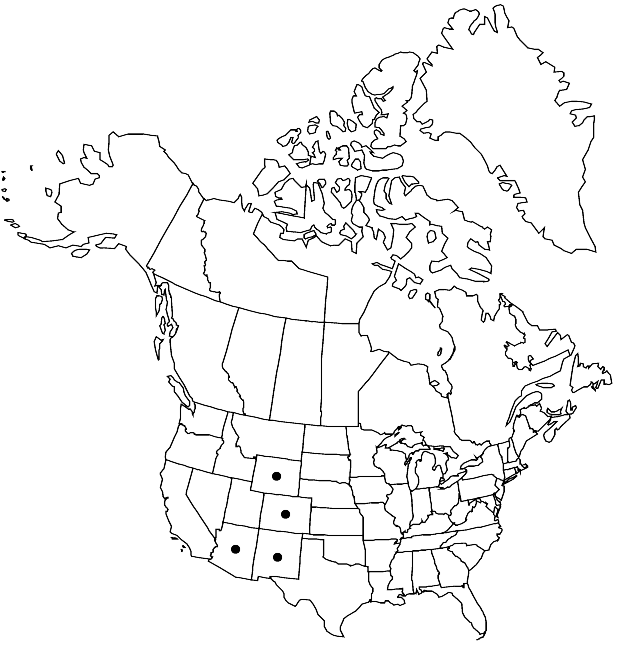Salix irrorata
Öfvers. Kongl. Vetensk.-Akad. Förh. 15: 117. 1858.
Shrubs, 2–7 m, (multistemmed, sometimes forming clones by stem fragmentation). Stems: branches (highly brittle or not at base), redbrown to violet, usually glaucous, glabrous; branchlets yellowbrown, (strongly glaucous or not), glabrous, sparsely velvety, or tomentose. Leaves: stipules absent or rudimentary on early ones, foliaceous or rudimentary on late ones, apex acute; petiole convex to flat adaxially, 4–14 mm, velvety adaxially; largest medial blade lorate, narrowly oblong, narrowly elliptic, or narrowly oblanceolate, 47–115 × 8–22 mm, 3.5–7.7 times as long as wide, base cuneate or convex, margins flat to slightly revolute, entire and gland-dotted, serrulate or crenate, apex acuminate, acute, or convex, abaxial surface glaucous, glabrous, sparsely tomentose, or short-silky, hairs wavy, adaxial slightly to highly glossy, glabrous or pilose; proximal blade margins entire or serrulate; juvenile blade yellowish green or reddish, glabrous or sparsely villous abaxially, hairs white. Catkins flowering before or just before leaves emerge; staminate stout or subglobose, 15–34 × 8–22 mm, flowering branchlet 0 (–2) mm; pistillate densely flowered, stout or slender, 14–43 × 7–12 mm, flowering branchlet 0–4 mm; floral bract brown or black, 1.3–2.5 mm, apex rounded, abaxially hairy, hairs straight or wavy. Staminate flowers: adaxial nectary narrowly oblong to oblong, 0.3–0.8 mm; filaments connate less than to more than 1/2 their lengths; anthers yellow or purple turning yellow, ellipsoid or shortly cylindrical, 0.4–0.7 mm. Pistillate flowers: adaxial nectary narrowly oblong to oblong, 0.3–0.7 mm; stipe 0.4–1 mm; ovary pyriform, beak slightly bulged below styles; ovules 9–12 per ovary; styles 0.3–0.9 mm; stigmas flat, abaxially non-papillate with rounded tip, 0.15–0.28–0.6 mm. Capsules 3.5–4 mm. 2n = 38.
Phenology: Flowering mid Mar-mid May.
Habitat: Streams, wet meadows
Elevation: 1400-3000 m
Distribution

Ariz., Colo., N.Mex., Wyo., Mexico (Baja California), Mexico (Chihuahua), Mexico (Coahuila), Mexico (Durango), Mexico (Sonora)
Discussion
Salix irrorata is very closely related to S. lasiolepis. The two are here maintained as separate species primarily because S. irrorata is a diploid and S. lasiolepis a tetraploid, and also because of their largely allopatric ranges (G. W. Argus 2007). Studies of sawflies (Euura Newman) by P. W. Price (pers. comm.) show that the same species of Euura can successfully reproduce on either willow. The only morphological character that separates the two is that in S. irrorata branchlets and branches are very strongly glaucous, whereas in S. lasiolepis they are not glaucous. Some plants have weakly glaucous stems (wax not visible except by polishing or only as sparkling crystals); this may be infraspecific variability or evidence of hybridization.
Hybrids:
Salix irrorata forms natural hybrids with S. drummondiana, S. geyeriana, and S. lasiolepis var. lasiolepis.
Salix irrorata × S. lasiolepis var. lasiolepis: This putative hybrid occurs in Arizona and New Mexico. It is characterized mainly by weakly glaucous branches.
Selected References
None.
Lower Taxa
"-0.6mm" is not declared as a valid unit of measurement for this property.
